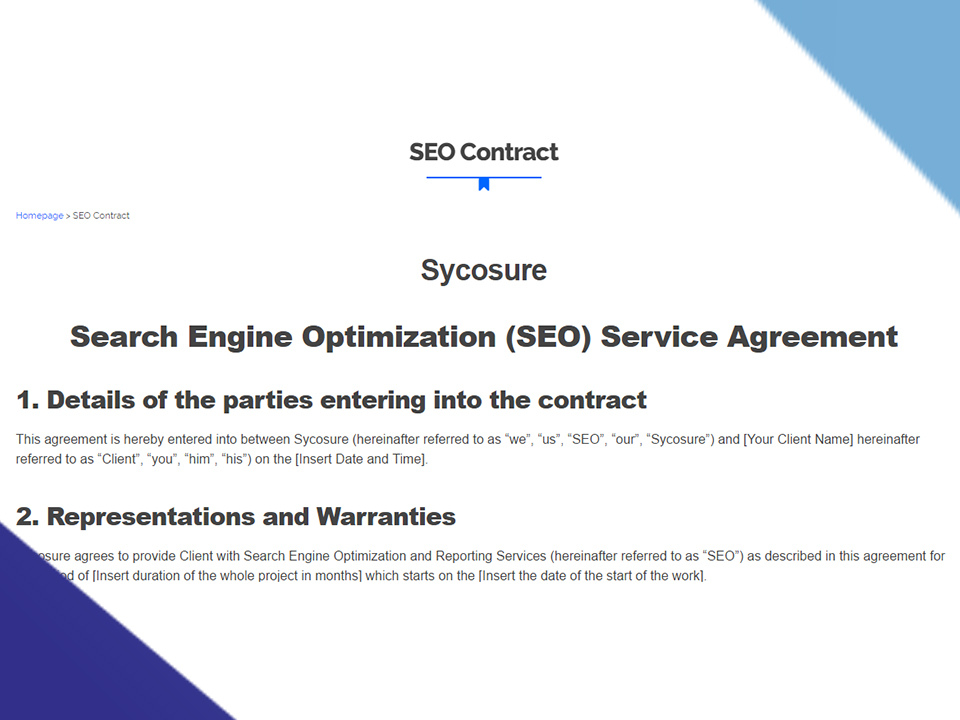I remember when I first started offering SEO as a service, I had a difficult time trying to figure out which pricing model to use. There were just too many to chose from and, at the time, I didn’t have any clients I could test these pricing models on, which made it even more difficult to choose the right one.
To spare you from the trouble I had, I’ve listed and described 6 different SEO pricing models and my experience with them.
6 Different SEO Pricing Models
1. Monthly Rate
A monthly pricing model involves you and your client agreeing to a set price that’s paid on a specific date each month (though I’m a bit loose with the payment date; as long as they pay the same month, I don’t care when I get it). This is one of my favourite SEO pricing models, and the model I use the most due due to its simplicity for both myself and my clients. All you have to do to get started with this pricing model is perform an SEO audit and estimate how much time you plan to spend each month on your client’s SEO campaign.
One issue that I have with this pricing model is that once your client agrees to a specific monthly fee, it can sometimes be difficult to get them to pay more later on, even if they’re seeing a significant profit from your services. Granted, not all clients are the same and some will be happy to pay more if you ask, but don’t count on it.
2. One-Time/Per-Project Fee
As the name implies, this pricing model is one I use for clients who want me to do bulk work every few months rather. I’m personally not a fan of this model as I prefer being able to work on a website throughout each month, makes changes to my SEO strategy as I see fit.
When I charge per-project, I usually don’t track rankings and make adjustments throughout the month, meaning if the rankings go down for one page, I won’t know about it. This is precisely why I don’t like this pricing model.
3. Hourly Rate
Technically, I charge $50 an hour for the work I do, which is fairly cheap when compared to other SEOs and considering I live in California. Now, I don’t use my hourly rate outright, though establishing an hourly rate can help you out with other pricing models.
For example, let’s say you complete a site audit for a prospect who’s interested in paying per-project. Based on the site audit, you estimate that the site would take 10 hours to complete. If you charge $100 an hour, then you could simply quote $1,000 for the project. Personally though, I’d charge a little more per project just in case the project takes longer than my estimation (it always does).
4. Pay Per Rank
This one is a bit risky as there’s a chance you might not get paid. I haven’t had a chance to test it out myself, though the way most people go about the pay per rank SEO pricing model is by having the client pay for the days they remain on the first page.
This pricing model has been abused by scammers in the past; some unscrupulous “SEOs” used this pricing model while ranking their clients for garbage queries like “super deluxe SEO service platinum edition in California”. Nobody is searching for these keywords and nobody is competing for them, making them an easy paycheck for scammers using the pay per rank model.
Of course, for you business owners reading this, an easy solution to this problem is to request the targeted keywords from your SEO and check the search volume yourself in the Google Keyword Planner.
5.Pay Per Page
I used this one once, and I hated it. The problem with charging per page is that not all pages are created equally. Some pages may be 300 words, others may be 3,000 words. If your client agrees to a per page model, you could spend 5 minutes on one page and an hour on another.
You see the problem here, right?
6. Pay Per Keyword
The SEO pricing model involves charging clients per keyword targeted. Much like the pay per rank model, pay per keyword is another ridiculous one. From what I’ve seen, it’s seldom used in the industry
- My Experience Accepting Crypto Payments For The First Time - April 25, 2025
- Are Forums Dying? A Look Into Forums As A Whole - April 22, 2025
- Are The “Rank 1 In Google For Any Keyword” Services A Scam? - April 1, 2025

